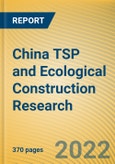TSP research: the coverage of TSPs has spread from IVI, cockpits to vehicles.
With the emergence of Internet of Vehicles, telematics service providers (TSPs) take on the roles of operation platforms, service platforms, cloud platforms and data platforms, and provide services such as call centers, navigation and positioning, audio-visual entertainment, vehicle monitoring, remote upgrade and information security. Influenced by the concept of intelligent cockpits, automotive functions are being redefined. TSP have been constantly enriching their services, and expanding the coverage.1. From the perspective of service scope, TSPs gradually expand their coverage along the path of `IVI → cockpits → vehicles`
Advances in technologies such as cockpit-driving integration and central computing platforms have made the demand for ecological expansion in the vehicle rigid. TSPs' business scope is spreading from automotive OS to cockpit OS and vehicle OS.For example, Banma SmartDrive has made a definite three-step plan for its AliOS. From 2015 to 2020, it should realize customization based on layered decoupling and develop intelligent automotive OS. From 2020 to 2022, it should build intelligent cockpit OS based on the heterogeneous distributed fusion architecture. From 2022 to 2024, it should accomplish intelligent vehicle OS based on the time-sharing multi-core heterogeneous distributed fusion architecture.
2. From the perspective of business model, TSPs led by OEMs are seeking business independence.
ECARX, a TSP invested by Geely, has contributed significantly to the construction and operation of Geely's IVI system. It has not only helped Geely upgrade G-NetLink to GKUI, but also achieved interoperability with popular ecosystems such as Tencent, Baidu and Alipay by building a unified account system. It has developed Galaxy OS and Galaxy OS Air, the next-generation intelligent cockpit systems, with Visteon and Qualcomm, enabling multi-screen interaction (clusters, center consoles, co-driver screens, AR-HUD), multi-domain integration (power domain, chassis domain and body domain) as well as more natural human-computer interaction.As of the first half of 2022, ECARX’s TSP solution had landed in 3.2 million vehicles, mainly in Geely's 12 brands. In May 2022, ECARX hoped to upgrade the enterprise image and expand the market through the listing on NASDAQ. The focus of market expansion transfers from Geely to third-party suppliers. According to the plan, third-party automakers will contribute about 24% to the revenue of ECARX in 2024.
3. From the perspective of ecological content, cross-terminal information flow will infinitely broaden the service boundary.
ICT suppliers represented by Huawei are committed to transplanting the mobile phone ecology into vehicles in the field of TSP, with the `flow` of information as the highlight.Huawei HarmonyOS is a future-oriented distributed intelligent operating system for all scenarios. In the form of building the underlying operating system, it organically links people, equipment and scenarios through a super virtual terminal, connects with applications via communication, and extends the advantages of mobile phones to IVI and other peripheral devices.
The Pantanal system released by OPPO is grafted to different operating systems in the form of middleware to enable seamless service flow across brands, systems and devices.
This product will be delivered within 3-5 business days.
Table of Contents
1 Status Quo and Trends of Chinese TSP Market
2 TSPs Dominated by OEMs
3 TSPs Backed by Internet Companies
4 TSPs Dominated by Telecom Operators
5 TSPs Backed by ICT Suppliers
6 Third-party TSPs and Other TSPs
Companies Mentioned
- ECARX
- Bean Tech
- TINNOVE
- Hynex
- OnStar
- iFLYTEK
- Baidu Apollo
- Tencent Auto Intelligence (TAI)
- Banma Information Technology
- PATEO
- ByteDance
- China Mobile
- China Unicom Smart Connection Technology
- E SURFING IOT
- Huawei
- Xiaomi Automobile
- OPPO
- VIVO
- NavInfo
- BDStar Intelligent & Connected Vehicle Technology
- FutureMove Technologies (Accenture)
- Beijing Yesway Connect Service
- TimaNetworks
- Ecar Telematics
- Shenzhen Soling Industrial Co., Ltd.
Methodology

LOADING...








